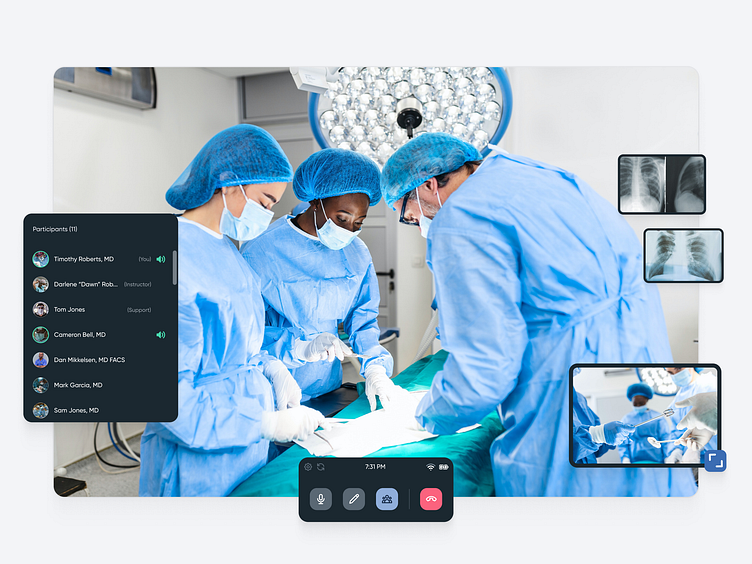Immertec - XR Training Platform
Overview
In 2018, I joined Immertec as the 2nd hire, where I spent a little over 5 years leading all design initiatives. During this time, we grew to over 50 team members, secured our Series A round, and worked alongside top medical device companies to train healthcare professionals in real-time using VR and other mediums.
Highlights
Reduced average customer sales cycles by 50%
Increased usability through a redesign by 15%
Maintained an average NPS score of over 80
Published 3 papers on accessibility and virtual environments
Won 4 awards, including Startup of the Year in 2019
Assisted in fundraising efforts of a $12M Series A round
Virtual Reality Viewer
At the core of our platform was the Virtual Reality Viewer, immersing healthcare professionals as if they were in the operating room. These were not simulations. When users donned a VR headset, they'd view live medical procedures and engage with peers in real-time from across the world.
Navigating the landscape of VR design was daunting at times, as established norms and testing challenges were present. Despite this, we designed a template that allowed us to rapidly iterate in Sketch or Figma and bring those designs into VR with nearly perfect placement and scaling.
Admin Dashboard
I worked closely with the co-founders and internal and external users while building interfaces for mobile, web, and VR platforms.
One initial challenge was streamlining event creation and management. While some issues, like user metrics and basic event management capabilities, were obvious, others were more ambiguous, such as merging multiple user workflows or making certain features accessible to non-technical users.
Based on our research, we decided to segment functionalities based on user roles in one unified dashboard. The admin dashboard freed up resources and empowered internal and external users to manage events, headsets, organizations, and more.
Interactive Web Viewer
I noticed recurring issues while collaborating with customer success where users struggled to access events. Initially, it appeared to be an authentication user flow issue. I eventually discovered the core problem: joining events in a headset requires more steps than many of our users had the time to complete.
To make joining an event seamless, I introduced a web-based interface, allowing live event access on any device with a browser. It was a technical feat, as our incredible engineering team managed to take live video initially meant for VR and display it perfectly on a 2D screen. This shift minimized the hassles of headset distribution and simplified event access while allowing for flexibility between VR and web-based experiences.
New event? Just send the user a link.
Insights
Working with new technology is not easy, but it presents challenges that keep you interested in ways other products may not. Combine that with the healthcare focus, and I felt I had an inherent reason for solving the problems we were working on.
While I learned a lot about startups in the early days of the company, I think my biggest lesson was one that can apply to nearly any role at any company: you may have the correct answer or idea, but how you present it and when you present it matters almost as much as whether its right or wrong.
Let’s connect!

















